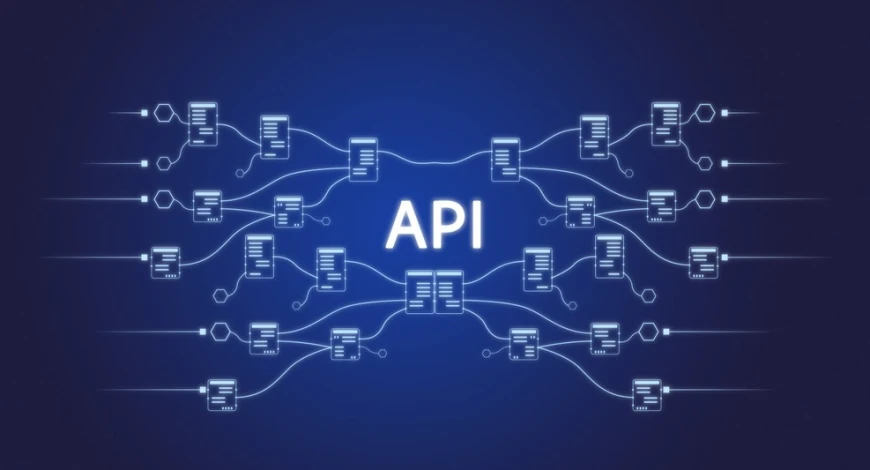Web Development Trends: Headless CMS and Serverless Architectures
The traditional understanding of web development is shifting away from single, monolithic systems and evolving into a world defined by headless CMS, serverless architecture, API-first design, microservices and JAMStack. The web is no longer just content rendered in a browser — it is now a distributed ecosystem that must support multi-device delivery, global scalability, ultra-fast performance and improved developer experience. This transformation impacts not only the technology stack, but also content strategy, data flow, security models and performance optimization practices.
Introduction: Why Web Development Is Transforming
Web platforms are now required to deliver content not only to desktop users, but also to mobile apps, IoT devices, smart TVs, voice assistants and AI-powered interfaces. That means the traditional “one backend – one frontend” model is becoming obsolete. It is being replaced by multi-channel content delivery through headless systems and infinite scalability through serverless functions.
Strategic Value: The Power of Headless + Serverless
- Frontend independence → React, Vue, Svelte, Next.js, Nuxt, Remix, etc.
- Separation of content and presentation → multi-channel publishing
- No server management → edge computing + global CDN cache
- Up to 70% reduction in maintenance cost
- 50% faster time-to-market
- True CI/CD automation with continuous deployment
What Is a Headless CMS?
A headless CMS means the “body” (data) operates without a “head” (UI). Content is delivered through an API rather than a built-in template engine.
Advantages of Headless CMS
- Single source of content → publish to web, mobile, kiosk, smart TV
- Independent backend and frontend development workflows
- Static site generation (SSG), ISR, edge cache support
- Flexible content modeling via JSON schemas
Popular Headless CMS Platforms
- Strapi (Node-based open source)
- Sanity.io (real-time data, GROQ queries)
- Contentful (enterprise SaaS)
- Ghost (blog + API-first publishing)
- Prismic, Directus, Storyblok
Serverless Architecture: Not “No Servers,” but “No Server Management”
Serverless does not mean servers disappear — it means provisioning, scaling, patching, uptime and infrastructure concerns are handled entirely by the platform.
Use Cases of Serverless
- Event-driven API functions (AWS Lambda, Cloudflare Workers)
- Webhook listeners, form submissions, background jobs
- Image optimization, PDF/report generation, email triggers
- Edge computing to execute logic near the user
Advantages of Serverless
- “0 idle cost” → no payment when idle
- Automatic scale → from 1 to 10M users
- Removes DevOps overhead
- API-first, event-first system design
Modern Web Architectures: JAMStack, API-First, Edge, Microservices
JAMStack
- J → JavaScript
- A → API
- M → Markup
- Hybrid static + dynamic delivery
API-First Architecture
- All data is exposed via REST or GraphQL
- OpenAPI / Swagger documentation standard
- Simplified 3rd-party integration
Microservices & Event-Driven Systems
- Kafka, RabbitMQ, SQS event buses
- Independent deployment & versioning
- Graceful degradation + circuit breakers
Security & Compliance: Risk Management in Headless + Serverless
In monolithic systems security is centralized, but in distributed systems it must be layered. Each component — API gateway, CDN, edge workers, cache layers, datastore, webhook endpoints — requires its own protection model.
Security Models to Apply
- Zero Trust access model
- JWT + OAuth 2.0 + OpenID Connect auth flows
- RBAC / ABAC authorization rules
- API gateway rate limiting + IP allowlist
- WAF + bot protection + DDoS mitigation
Data Governance
- PII masking & tokenization
- GDPR / KVKK compliant retention policies
- Immutable audit logs
- Event sourcing & reversible state
Performance, Scalability & Observability
Performance Metrics
- TTFB (Time To First Byte)
- TTI (Time To Interactive)
- P95 / P99 response time
- Largest Contentful Paint (LCP)
- Core Web Vitals (CLS, FID, INP)
Observability Tools
- Log aggregation: ELK, Loki
- Tracing: OpenTelemetry, Jaeger
- Edge logs: Cloudflare Analytics, Vercel Insights
- APM: Datadog, NewRelic, Sentry
Real-World Use Cases
1. Multi-Language Content Platform
- Contentful + Next.js ISR + Vercel
- 30 languages, single API backend
- 0 server maintenance, 120ms average response time
2. Headless Commerce Architecture
- MedusaJS or Shopify Hydrogen
- Payment, inventory, ERP via API
- Edge cache + serverless checkout
3. E-Signature & PDF Workflow
- Serverless dynamic document generation
- Webhook-triggered signing pipeline
- Stateless functions + S3 object storage
KPI & ROI Measurement
Modern web projects are not judged by “how many pages were viewed,” but by efficiency, scalability, cost impact and developer velocity.
- Deployment speed (CI/CD pipeline)
- Server maintenance cost → 0 ops
- Time-to-first-byte (TTFB) → SEO + conversion
- Global latency by region
- Frontend & backend parallel delivery speed
Best Practices
- Design API first, UI second → API-first workflow
- Hybrid static & dynamic (SSR + ISR + SSG)
- Use edge compute → move logic closer to the user
- Log everything, but define data retention rules
- Cache strategy is designed before code
- “Delete is a feature” → remove unused endpoints
Headless & Serverless Project Checklist
- Is API gateway rate limiting configured?
- Is cache warm-up strategy defined?
- Are headless CMS schemas fully modeled?
- Was serverless cold-start optimized?
- Is there a fallback strategy for edge functions?
- Was global CDN propagation tested?
- Is PII data passing through masking layer?
Headless CMS and serverless architecture are redefining web development not only technically, but commercially. These models provide developer freedom, operational cost reduction and ultra-fast user experience. The web is no longer a single system — it is a distributed service network. The future belongs to architectures that speak through APIs, run at the edge, and separate content from execution.
-
 Gürkan Türkaslan
Gürkan Türkaslan
- 6 November 2025, 13:14:16
 English
English



